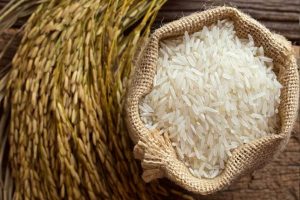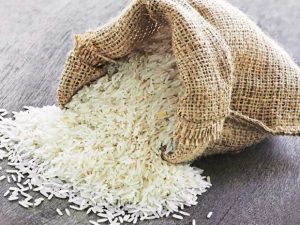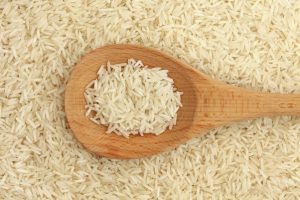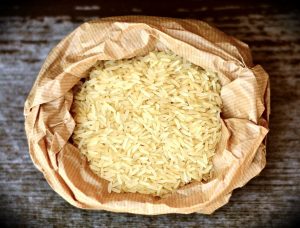- MOST RECENT
obzor (2455)

 26.05.2020
26.05.2020 The aroma of well-cooked, spice-infused basmati rice is one of the fondest culinary memories for most people. Dubbed ‘the scented pearl’, this superior long-grain rice is used in biryanis, rajma chawal, pilaf, and even in some zesty Chinese dishes to enhance their flavour.
In 2018-19, India, the largest exporter of basmati, exported almost 33,000 crores worth of this variety, according to APEDA. APEDA also states that there are up to 29 varieties of basmati rice grown in India. How do you pick the finest one for your cooking needs? This article will help you decide.

What Factors Play a Role in Determining the Varieties of Basmati Rice?
Every rice grain might look similar but can be differentiated based upon:
• Its shape and size.
• Its moisture content.
• The whiteness or chalkiness in its overall appearance.
• The number of foreign materials in the product, for the purity value.
• Its taste and aroma after being cooked.
These factors also determine the price of the rice kernels.
So Nutritious!
How nutritious is basmati? Check out the approximate values in one cup of cooked rice. These are different for different varieties and have an average of 262 calories in one cup (163g). DV indicates daily value as per the 2000 calorie diet.
| Nutritional Parameters | Amount |
| Calories | 210 |
| Protein | 4.4g |
| Fat | 0.5g |
| Fibre | 0.7g |
| Carbohydrates | 45.6g |
| Sodium | 399mg |
| Folate | 24% of the DV |
| Thiamine | 22% of the DV |
| Selenium | 22% of the DV |
| Niacin | 15% of the DV |
| Copper | 12% of the DV |
| Iron | 11% of the DV |
| Vitamin B6 | 9% of the DV |
| Zinc | 7% of the DV |
| Phosphorus | 6% of the DV |
| Magnesium | 5% of the DV |
Some of the Finest Varieties of the Aromatic Basmati
Here are some of the star varieties you can pick from:
Organic Basmati
The latest rage in India, organic basmati is considered by many to be the best. The Annals of Internal Medicine journal ran an article about how organic foods, irrespective of their type or kind, are a great way to reduce our susceptibility to antibiotic-resistant bacteria and harmful chemicals from pesticides.
Brown Basmati
Preferred by the health-conscious and recommended by nutritionists all over, brown basmati is the best kind of rice you can add to your diet.
White Sella
It is grown in large quantities across the nation.
Super Kernel
It is truly one of the royal varieties of basmati rice.
Steam Basmati
It is an uber-popular and easily available rice variety.

Pusa 1178
A newly introduced variety, it is a better version of the Pusa 1211 that was already popular in Indian households.
11-21 Sella
This is a favourite of the people and was made available only a few years ago.
Tips for Picking the Right Kind of Basmati
Follow these the next time you go grocery shopping:
Even before it is cooked, good quality basmati will have an aroma to it. If it has no aroma, don’t buy it. The aroma is one of the best signs of good quality basmati rice.
While white rice might look appealing, good quality basmati rice has a light golden hue. It shouldn’t have grey tones, though. Make sure of that.
The longer the basmati rice kernel, the more expensive and high-quality it is. Also, look at the ends. Are they tapered? Opt for rice that has a minimum grain length of 3.5mm, as suggested by the Indian government in a Consumer Voice Report.

While it might seem counter-intuitive to buy rice that is not a fresh crop, aged basmati is actually better in quality. It is somewhat like wine. When aged for a few years, the rice is dried fully and stays separated when cooked.
Ensure that the purity percentage is as close to 100 as possible. The foreign matter should not be more than 6% of the total weight, according to a Consumer Voice Report by the government of India. This means that there are almost zero impurities, dirt or other foreign materials in the rice.
When harvested, rice has a high moisture content. Therefore, it has to be dried before it can be sold. The Food Safety and Standards Authority of India states that it has to be less than 16%.
In a time when we are all getting health-conscious, choosing organic basmati, or brown basmati, is a wise choice. Organic basmati is grown without the use of harmful pesticides, using the age-old methods of cultivation. Brown basmati or brown rice of any kind is whole grain, containing umpteen amounts of nutrients and can help reduce the risk of heart disease and type 2 diabetes significantly.
For export quality rice, the percentage of broken and fragmented rice kernels cannot be more than 10%, according to a Consumer Voice Report. That’s exactly what you should aim for if you want to consume the best quality of basmati.

Derived from Sanskrit, the word ‘basmati’ literally means ‘the one with aroma’, according to Hindustan Times. It is a lot more than just rice for Indian households – it is a legend. Akbar’s famous biography Ain-i-Akbari, written in the 16th century also mentions the cultivation of this rice variety in different regions of the then India.
Basmati rice is truly a tradition we are never going to forget, and now you know how to carry it on – by picking the best one!